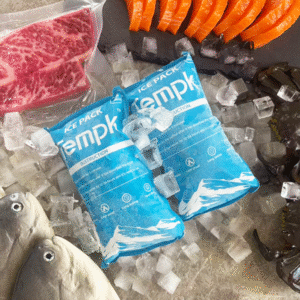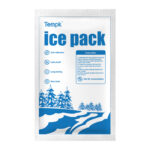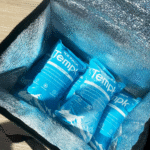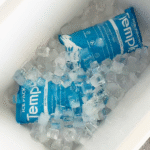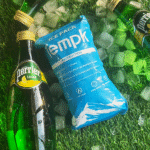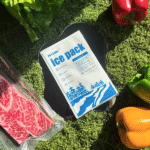Packing dry ice for shipping isn’t just about tossing blocks into a box—it’s about compliance, sécurité, and keeping your products intact. Dans 2025, suivant Voici pi 954 et 49 CFR 173.217 is essential for international and domestic shipments. You need the right amount of dry ice, isolation appropriée, clear labeling with “UN 1845,” and a package design that allows CO₂ to vent. Bien fait, you’ll avoid costly delays, protect your cargo, and pass carrier checks the first time.
-
Calculate how much dry ice you actually need for your lane and payload
-
Choose the right insulated container to extend hold time and reduce waste
-
Label and document packages correctly to comply with Class 9 règles
-
Apply real-world cold chain best practices for food, Pharma, et biotechnologie
-
Comprendre 2025 innovations: carbon-negative pellets, Surveillance de l'IoT, et isolation durable
How much dry ice should you use for shipping?
Réponse directe: Plan 2.5–5 livres (≈1.1–2.3 kg) par 24 heures par petit glacière, puis ajustez l'isolation, climat, and transit delays. Mark only the poids net de glace carbonique en kg sur la boîte.
Explication élargie:
The sublimation rate depends on insulation type, taille de boîte, et conditions ambiantes. A 48-hour ground shipment in summer might require 10–14 livres (4.5–6.4 kg), while the same shipment with a vacuum-insulated shipper may need just 8–10 lb. Always round up and add a 25–40% buffer for customs or weather delays.
Easy sizing shortcut
| Itinéraire & Durée | Base Estimate | Tampon | Ce que cela signifie pour vous |
|---|---|---|---|
| Air domestique, 48 heure | 6–8 lb | +2 lb for thin liner | Safe for 2-day lanes |
| Warm 3-day ground | 10–14 livres | Améliorer l'isolation | Reduce spoilage risk |
| Intl express, 2–3 jours | 8–12 lb | Buffer 25–40% | Covers customs dwell |
Conseil de pro:
-
Placez de la glace carbonique sur top of the payload—cold air sinks and stabilizes temperatures.
-
Enregistrer poids de glace sec nette during pack-out—this is a compliance requirement.
-
Use a pack-out calculator or historical lane data to refine estimates.
What packaging works best for dry ice shipments?
Réponse directe: Utiliser un vented corrugated outer box with strong insulation (EPS ou VIP), secure the product in a sealed inner container, and leave a vent path for gas.
Détails:
-
Mousse EPS (1–1,5 po): Abordable, holds for 24–48 hours, ideal for domestic shipping.
-
Panneaux d'isolation sous vide (VIP): High performance, holds for 48–96 hours, reduces dry ice by ~30%.
-
Rigid polystyrene coolers: Réutilisable, durable, moderate efficiency.
| Type de conteneur | Tenir le temps | Efficacité | Application |
|---|---|---|---|
| Doublure PSE (1–1,5 po) | 24–48 hrs | Modéré | Low-cost, courts trajets |
| Panneaux VIP | 48–96 heures | Haut | Long, expéditions de grande valeur |
| Refroidisseur rigide | 24–72 hrs | Moderate-high | Durable, option réutilisable |
Conseils pratiques:
-
For weekend risk, ajouter 25–40% dry ice reserve or switch to VIP.
-
For parcels >30 kg capacity, assurer label text height ≥12 mm.
-
Never seal completely; venting is mandatory to prevent ruptures.
What labels and documents are required in 2025?
Réponse directe: Mark one face of the package with:
-
"Et 1845, Glace sèche, net __ kg»
-
Classe 9 diamant de danger
-
Adresses de l'expéditeur et du destinataire (not on the hazard label)
Étendu:
-
FedEx/UPS: No hazmat declaration if dry ice is used to cool non-dangerous goods. Toujours, you must input net kg in shipping tools.
-
USPS: Domestique uniquement, max 5 lb par avion; no international dry ice shipments allowed.
-
Iata 2025 Liste de contrôle: Self-audit tool for shippers to avoid acceptance delays.
Safety rules you cannot ignore
-
N'utilisez jamais de contenants hermétiques: Le CO₂ doit s'évacuer.
-
Portez des gants isolés: Frostbite can occur in seconds.
-
Ventilate vehicles & stockage: Le CO₂ peut déplacer l'oxygène.
-
Don’t write inside the Class 9 diamant: Labels must be clean and clear.
Aperçu du cas: A seafood exporter reduced failed scans by 60% after switching to preprinted UN 1845 panels with a dedicated address area.
Que sont les 2025 innovations in dry ice shipping?
-
Carbon-negative dry ice pellets: Made from captured CO₂, réduire les émissions.
-
Compostable insulation (biomousse): Meets ISTA 7E freeze standards, composts in ~100 days.
-
Surveillance de l'IoT: Real-time temperature alerts and data logging for compliance.
-
Routage IA & automation: Cuts dwell times and optimizes dry ice allocation.
Perspicacité du marché: Par 2025, reusable shippers and VIP packaging are cutting spoilage claims by over 20%, making eco-friendly choices financially attractive.
FAQ
Q1: How to pack dry ice for shipping without a hazmat declaration?
Use a ventilated box, ajouter de l'isolation, weigh and label “UN 1845, Glace sèche, net _kg,” and apply a Class 9 étiquette.
Q2: Quelle quantité de neige carbonique dois-je prévoir par jour?
2.5–5 lb per 24 hr for small shippers; always add a 25% tampon.
Q3: Can I ship dry ice internationally with USPS?
Non. USPS permits domestic dry ice shipments only, ≤5 lb by air.
Q4: Where should I place the hazard label and text?
On the same face of the package, outside of the hazard diamond.
Q5: Puis-je mélanger des packs de gel avec de la neige carbonique?
Oui. Gel packs act as a buffer once dry ice is spent, extending hold time.
Résumé & Recommandations
To pack dry ice in 2025:
-
Choisissez un vented outer box with EPS or VIP insulation
-
Ajouter la glace sèche au-dessus de la charge utile and record the net kg
-
Mark clearly with Et 1845 + Classe 9 étiquette de danger
-
Suivre carrier-specific guides to avoid labeling errors
-
Considérer VIP, expéditeurs réutilisables, and IoT monitoring to cut cost and risk
Étapes suivantes:
-
Use Tempk’s dry ice calculator for frozen shipping
-
Explore gel packs vs dry ice for pharma
-
Download the IATA packing instruction 954 liste de contrôle
À propos du tempk
Et tempk, nous concevons Solutions de chaîne froide that reduce dry ice consumption while maintaining compliance. Our systems combine validated pack-outs, isolation respectueuse de l'environnement, et automated labeling tools to help you cut exceptions and reduce spoilage.
CTA: Prêt à optimiser vos expéditions? Schedule a cold chain consultation and get a tailored pack-out review for your top shipping lanes.






